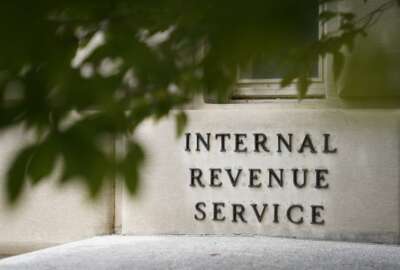Agencies setting off into the next data frontier — procurement
GSA, NASA and NIH are providing agency customers more insight into what they are buying, how they are buying it and what prices they are paying. OFPP plans to...
Agencies are starting to grasp the real value of procurement data. Several agencies are asking the General Services Administration, NASA and others for more details on what they buy, how they buy it and how they could make better decisions.
NASA, for example, is working closely with the Veterans Affairs Department to provide them with an assortment of data points around energy efficiency, such as how VA’s IT products are rated for Energy Star or E-Peat. NASA also plans to provide VA with information about how their purchases meet the Trade Agreements Act and about their buying habits based on product classifications.
Joanne Woytek, the program manager for NASA SEWP governmentwide acquisition contract, said the fact that VA and other agencies are asking for and receiving this type of data is a sign of maturity for both the GWAC providers and the agencies in understanding what’s available and why the data matters.
“I’ve seen this happening more with our contracts and SEWP V. A lot of what we are putting into that is to make it a more mature model. We can’t just say, ‘We can do that,’ we will actually demonstrate the things we can do,” she said at the 2014 Acquisition Excellence conference in Washington Thursday sponsored by GSA, the Homeland Security Department and ACT-IAC. “We will be able to show agencies what they are buying. We’re going to be able to provide them with more information. We always said we could do that, but we actually are going to start doing that. I think that’s going to have a bigger effect on agencies who no longer will say ‘I don’t want to use you because I’m not sure you can give me that information. I’m not sure you can control what we’re purchasing.’ We can do that for them and we’ll actually start showing that. So I see us having a better impact on people now that we’ve gotten to this point.”
(Story continues after photo gallery.)

But it’s not just the data that’s important, there is a growing understanding of what has to come from the data. Agencies are beginning to grasp the fact that data is a means to the end — with the end being what decisions can be made based on a number of factors.
Quality over quantity
During a second panel discussion on leveraging data to make decisions, panelists say the data must be part of a broader decision base to focus on outcomes.
Paul Brubaker, the Defense Department’s director of planning and performance management, said the goal for agencies should be to understand what they are getting for the money they spend.
“The outcome discussion drives a different discussion than what we’ve been having. The dialogue that we’ve been having is what do we do with existing data, how do we expose it and how do we generate value?” Brubaker said. “We’ve got to drive some fundamental questions. I think by focusing on the outcomes, you have to start looking at the structures and processes that we execute in government, whether it’s financial management, whether it’s chief human capital officers, or whether it’s acquisition. Getting to the acquisition process, I think we have to take a fundamental examination of the process a lot more holistically than we have in the past because it’s complicated. We have generated a boat-load of complexity in the system, or for those of you who are Lean Six Sigma people, there’s tons of MUDA in the system — non-value added activity.”
Brubaker said too often agencies are focused on the front-end of the collection and not what changes or business process improvements the data could lead to.
Karen Pica, a management analyst in the Office of Federal Procurement Policy, said the administration is leading an effort to address data standards to help improve decision making to lead to outcomes.
Pica said OFPP recognizes the data agencies have been collecting for decades may no longer be the most important information today. OFPP is looking at whether there are other data sets that are needed at different points and where to get it from.
“We’ve got every agency working with us with the data standards. We’ve got DoD leading the Government Accountability and Transparency Board. Transportation is doing some phenomenal things with what they are doing with their data standards and their systems. And Treasury with what we are trying to do with USASpending,” Pica said. “What we can do for data standards, there was a legislative requirement that OMB worked to develop contract writing system data standards. What that means is purchasing requests, receiving reports invoice standards and then standards around contracts themselves, as well as a requirement to put together a prices paid portal. When we say data standards, we mean everything from how you exchange data across systems to what is a definition of an obligation.”
Plans to improve USASpending
Treasury recently took over the day-to-day operations of USASpending.gov from GSA.
Christina Ho, the executive director of data transparency in Treasury’s Bureau of the Fiscal Service, said USASpending.gov is a new area of focus and their goal is to improve the transparency and accountability of financial transactions.
“With USASpending, what we are right now focusing on is to make some impactful improvements within a short term, 6-to-12 month period of time,” she said. “At the same time, we have developed a longer term vision of what spending transparency would actually look like. We are operating under the guiding principle of architecting for unpredictability because we can’t predict what questions will be asked tomorrow. Every event results in multiple data calls and we don’t want to design a solution based on the questions we know today, but we want to design a solution that is capable of answering the questions of tomorrow.”
Ho said the end state of USASpending would be to present a 360-degree lifecycle of financial transactions.
But before agencies can reach that end state or focus on outcomes, departments need to collect and understand the right data.
For many, that begins with understanding how much money they are spending on a particular product or service.
Along with NASA, the National Institutes of Health, which runs three difference GWACs for IT products and services, is determining how best to give agencies and vendors the best pricing data.
“Through our GWAC programs we try to be as transparent as possible with ceiling prices on all the products and services sold through our contracts so agencies know what the ceiling rates are and actually the other industry partners know what the ceiling rates are for their competitors,” said Rob Coen, acting director of the NIH Technology Acquisition and Assessment Center. “We’re also working on setting up a dashboard so that customers can see what other agencies are buying, whose buying what, who they are buying it from and what they are paying so they can be more strategic in what they buy.”
He said there are examples of agencies buying similar products whose prices are hundreds of dollars apart.
Coen said he hopes that pricing data will make it easier for agencies to use GWACs because they’ll have more confidence in the prices they are paying. He said only about 10 to 15 percent of all IT spending goes through GWACS, but that percentage should be higher.
Prices of labor categories available
The General Services Administration is following suit as well when it comes to offering more detailed data on pricing.
“We have recently set up a website on StrategicSourcing.gov that provides government employees with prices paid on 80 labor categories that are on the Alliant and Alliant Small Business contracts. Our hope is they can use this at the program office level, or through independent government cost estimates so they can be informed and understand what are the actual prices paid as opposed to just the ceiling prices of the contract,” said Chris Fornecker, GSA’s director of the Center for GWACs in the Federal Acquisition Service. “They will be able to look at soon — in the coming month another release will be coming out — the impact of competition on those prices, which will reduce those prices by 13 to 14 percent. They will be able to slice and dice it by whether it’s in-house labor or not, by different areas of the country and by agency.”
Fornecker said the data will help the contracting officers to understand what is a reasonable price negotiation and what should they expect to get in terms of discounts.
He said GSA has a long list of improvements coming in the next few months.
All of this is part of a broader effort by OFPP that is coming together in the Prices Paid Portal. Lesley Field, acting administrator of OFPP, said the portal still is in the beta or pilot stage, but should reach initial operating capability in the late summer or fall time frame.
OFPP launched the portal last fall using existing datasets as opposed to real time data just to ensure it’s working.
Field said OFPP is ready to expand the Prices Paid Portal so agencies can get actual use out it.
Concerns about transparent pricing
But not everyone believes listing prices makes sense.
NASA’s Woytek said agencies could be missing the bigger picture if they only look at what price was paid for a particular product or service.
“When you do data transparency, we show two prices and the customer says, ‘I should have been charged $1,200 instead of $2,400.’ It’s like, well, it’s because you ordered something different,” she said. “It’s not easy to show that when you just show pricing and say this is an average price. People get the wrong impression, especially with IT when a memory component could change the price immensely.”
Woytek uses a typical desktop PC as an example. The basic cost is around $250, but that’s stripped down with only the basics. But agencies will spend a lot more money as you change configuration, what comes with it whether it’s a printer or monitor or something else, and change the terms and conditions of the purchase.
“If that’s not available when you are being transparent with this information, it’s going to mislead people to ask for things that will either hurt industry or keep them from getting what they want,” Woytek said. “You have to be careful about jumping into just showing everything and not providing the context.”
She added that industry rarely shows their best prices up front because then they lose their ability to negotiate.
OFPP’s Field said the White House is aware of the concerns about the lack of context with pricing, and is trying to address the terms and conditions issues so agencies can compare apples to apples and not apples to airplanes.
RELATED STORIES:
OMB sets new deadlines to improve data on USASpending.gov
OFPP wants agencies to certify contracting data quality
Copyright © 2025 Federal News Network. All rights reserved. This website is not intended for users located within the European Economic Area.
Jason Miller is executive editor of Federal News Network and directs news coverage on the people, policy and programs of the federal government.
Follow @jmillerWFED






